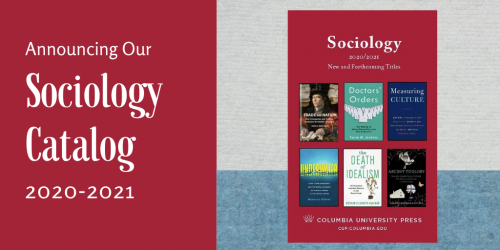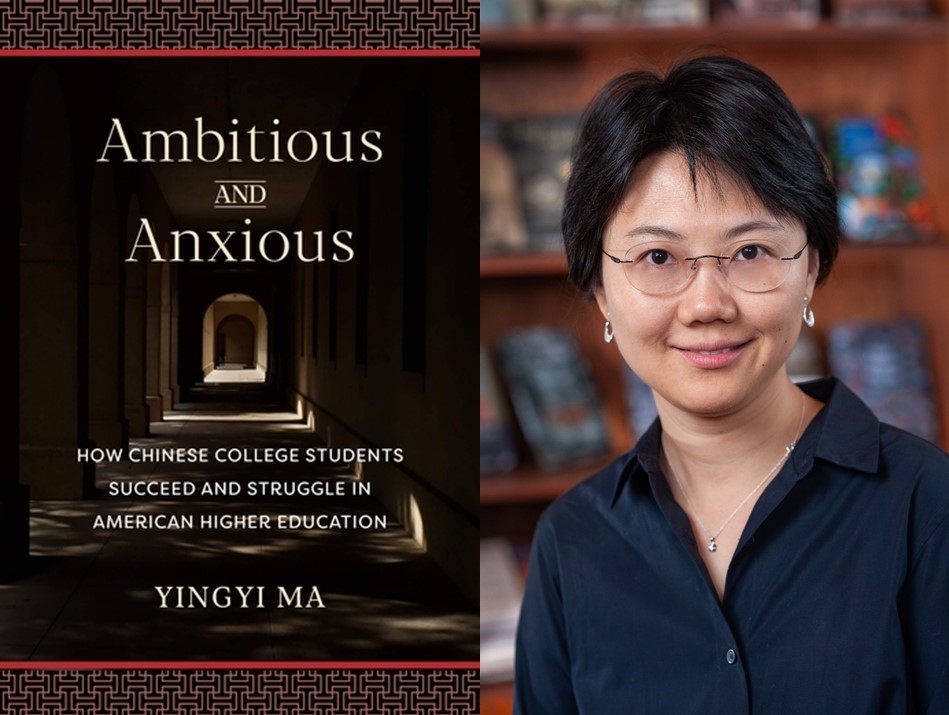Q&A: Don Grant on Nursing the Spirit

Illness and death have always raised profound spiritual concerns. However, today most people experience suffering and treatment in hospitals and other impersonal, bureaucratic facilities whose employees are expected to follow scientific, rationalized norms of behavior. How do professional caregivers—the nurses and other workers who tend to patients—navigate between science and spirituality? Based on extensive fieldwork and an in-depth survey on spirituality, Nursing the Spirit investigates the subtle ways that nurses at an academic medical center incorporate spirituality into their care work. It also interweaves empirical analyses of nurses’ spiritual work with the author’s experiences as a hospital volunteer chaplain and a living liver-transplant donor to develop a new understanding of the social significance of religion and the intersection of science and spirituality that centers the perspectives of people who provide care.
Q: Before asking what motivated you to conduct this study and what you found, I was wondering if you could put nurses’ spiritual care in its larger context and say why you think it is socially and historically significant.
Don Grant: During the so-called Axial Age (800–200 B.C.E), communities first began to recognize all humans, including foreigners, immigrants, enemies, and other strangers, as spiritual beings deserving of protection and nurture. In the years since, however, this fundamental principle of the world religions has increasingly been questioned as societies have modernized and developed care systems grounded in scientific approaches that are indifferent, if not hostile, to the notion that humans possess a transcendent quality. Max Weber, arguably the most influential social theorist of the modern era, feared that as religious motives for action were gradually replaced by more scientific motives and understandings, human qualities like the spiritual that had previously ennobled vulnerable strangers would eventually be extinguished, causing institutions to operate “without regard for persons” and dissipating the passion to ameliorate misery. Understood in this broader light, nurses’ spiritual care provides a window into the fate of the Axial ethic and whether its idea that all individuals are inherently sacred and therefore worthy of compassion can still be rendered plausible in modern public life.
Q: OK, so how did you become interested in this subject?
Grant: Like Weber, I come from a religious background (in my case, liberal Protestantism) but I chose to work in the highly secular field of social science. As a result, I sometimes struggle with a feeling that I left something important behind, as did Weber. That sense of unease compelled me to spend part of a sabbatical working as a chaplain intern at an academic medical school where I tried to figure out if it might be possible to integrate the sacred and secular. After weeks of stumbling and bumbling in that role, I discovered that the advice I received from scientifically trained nurses about how to approach patients and address their spiritual needs was often more helpful than the advice I received in the chaplaincy training program. This furthered my budding interest in Weber’s writings on the tension between religion and science in the post–Axial Age and led me to conduct a formal study of nurses’ spiritual care.
My engagement with the subject did not stop there, however. Years later, I found myself at another university hospital, but this time as a living liver transplant donor to my dad. This experience gave me new insight into the precarious place of human qualities like the spiritual in ultramodern care settings.
My interest in the fate of the Axial ethic has grown further still in recent times as society has become more polarized. The rise of despotic leaders, divisive and hateful rhetoric, manufactured outrage over critical race theory, indifference to racialized acts of violence, and diatribes against mask mandates suggest that Axial values about honoring and protecting strangers are being rejected and replaced by virulent forms of parochialism. Compounding this problem is the development of biotechnologies and radical medical procedures designed to “improve” humanity, ranging from cloning, cryonics, and gene therapy to nanotechnological implants, stem cell research, and organ transplants. These developments encourage us to approach the human being as a set of physical components to be transformed, optimized, and commodified instead of an intrinsically dignified and worthy spiritual whole. On top of this is the climate crisis (another topic I study) brought on by society’s continued burning of fossil fuels, which most immediately impacts the poor but ultimately threatens us all. These developments suggest that the chief question before us today is, as Erich Fromm once argued, not whether God is dead but whether the sanctity of humanity, if not humanity itself, will soon be.
Q: When scholars write about the social significance of religion, they usually discuss the influence of religious leaders on the wider society or how believers live out their faith in their day-to-day activities. Why did you decide to focus instead on helping professionals like nurses?
Grant: I did so for a couple of reasons.
The development of our species has gradually shifted from families, neighborhoods, and churches to large, science-based institutions like hospitals and schools that are responsible for protecting and nurturing people. As the interface between these institutions and the wider public, nurses, teachers, and other frontline care professionals are not only expected to apply the scientific techniques they have learned but also offset science’s impersonal effects by nurturing qualities of clients that honor them as humans, including those of a spiritual nature. For example, during the COVID-19 pandemic, nurses were required to enforce protocols that separated vulnerable populations from loved ones who affirmed their worth as persons. This put pressure on these workers, who already felt overwhelmed by their technical responsibilities, to assume the fraught role of surrogates. This happened most obviously in hospitals and nursing homes, where COVID patients were not allowed to receive visitors and care workers were the only people available to compensate for their absence. But responsibility for care of the human spirit falls on frontline staff whenever we assign responsibility for at-risk groups—the young, the old, the poor, the sick—to public systems run by scientific authorities who demand that others respect their expertise and not interfere with their impersonal methods and procedures. To counterbalance these organizations’ cold nature, staff who directly interact with the public are frequently called upon to act as moral stand-ins and provide a “human touch.” Viewed from this perspective, these workers play a pivotal role in deciding the public fate of the Axial ethic.
Another reason that I focused on helping professionals is that discussions about the compatibility of science and spirituality have been dominated by “talking heads” and rarely include the perspectives of those who directly provide care. Ironically, this gap in attention has its ancestry in the Axial Age: Axial Age thinkers did not consider the views of their societies’ primary care providers, most of whom were slaves, servants, or women. Partly because the male luminaries of Axial thought were so preoccupied with the aggressive behavior of their own sex, they rarely gave these groups a passing thought. In prescribing spiritualized and universalized understandings of care as an antidote to intergroup hostility, these thinkers never consulted those who were then and are still carrying out most of that supposedly edifying work.
Q: What did your study of nurses’ spiritual care find?
Grant: After learning that University Hospital planned to terminate its entire chaplaincy program, nearly a third of nurses said they would be willing to step in for chaplains and take on responsibility for patients’ spiritual care. Indeed, an even larger percentage claimed they already provided more spiritual care than chaplains.
Although many nurses were open to performing clergy-like roles, they rarely talked about spiritual matters among themselves. A large majority (85 percent) said they were quite comfortable discussing spiritual matters, but they were also under the false impression that this was not the case with most of their peers. Hence, a veil of pluralistic ignorance prevented nurses from broaching the topic of spirituality at work. In addition, spirituality did not emotionally resonate with all nurses. Many nurses, in fact, were torn about describing their science-based care as spiritually significant. Factors at work and elsewhere that convinced some nurses there was something spiritual about their care work also enabled them to feel their work was an extension of their true selves. But for others, what led them to believe their work was spiritual put pressure on them to suppress their true feelings. Working with seriously ill patients, for example, sensitized some nurses to spiritual issues and led them to acknowledge the place of spirituality in their work, but working with those same types of patients also put a limit on the emotions they could express.
Despite these communication barriers and emotional risks, a significant minority of nurses who view their work in spiritual terms as a type of calling systematically applied a variety of spiritual therapies in a variety of situations. These workers were instrumental in translating their hospital’s advertised commitment to spiritual care into subtle but tangible deeds. And contrary to the idea that ordinary people choose between the arguments of religious and scientific experts, most nurses adjudicate these perspectives through stories about experiences with patients. These rarely shared tales were often crafted in ways that not only made the spiritual plausible but also suggested how science and spirituality might coexist.
Q: Unlike a lot of academic books on religion, you incorporate some of your personal experiences as a provider and recipient of care. Why?
Grant: Because those experiences are highly personal, critics would be right in suggesting that I tread the slippery slope of subjectivity in retelling them. Whether the text lapses into sentimentality and self-indulgence, I will let readers judge for themselves. My hope, though, is that it will at least suggest how stepping outside the ivory tower and into the realm of care can be a valuable means of understanding the social world. I also stress throughout the book that the goal here is not to prove a supernatural realm exists or endorse any traditions and practices that allegedly tap into it. Rather I am interested in what sociologists like Weber say is the first obligation of religion—to value humanity.
Q: According to the promotional materials for the book, you were recently ordained by the United Church of Christ to work with communities in devising solutions to problems of injustice revealed by the pandemic and climate change. What is up with that?
Grant: I continue trying to figure out how to reconcile my religious inheritance with my work as a social scientist. Several of the nurses I studied suggested that it is possible to straddle the worlds of religion and science, while others suggested that it is not. Only time will tell how the tension between the two worlds plays itself out in my case.
Categories:Author InterviewMedicineReligionSociology





